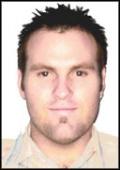spore
Development of an autonomous unmanned aerial system to collect time-stamped samples from the atmosphere and localize potential pathogen sources
| Publication Type | Journal Article | |
| Year of Publication | 2011 | |
| Authors | Gonzalez, F.; Castro, M.; Narayan, P.; Walker, R.; Zeller, L. | |
| Journal Title | Journal of Field Robotics | |
| Volume | 28 | |
| Issue | 6 | |
| Pages | 961-976 | |
| Start Page | 961 | |
| Journal Date | 11/2011 |
This project developed an understanding of how biotic factors affect the dispersal of rain-splashed asexual spores (conidia) and wind-borne sexual spores (ascospores).
What is the biosecurity problem?
Once an exotic fungal pest has been introduced to a new area (such as via seed or soil) establishment and further spread are influenced largely by the spore dispersal pattern. Long-distance dispersal via wind-borne spores is a common feature of fungal pests, as is short-distance dispersal via rain-splash of spores. Studies that identify the link between environmental factors and spore dispersal can assist in assessing the potential disease risk for agrogeographical zones. Ascochyta species of pulse crops are already within Australia and have rain-splashed asexual spores (conidia) and wind-borne sexual spores (ascospores). These fungi provide an opportunity to study the relationship between the environment and spore dispersal, and to develop risk assessment strategies for exotic pests with similar spore dispersal patterns.
The main outputs of this project were to:
- identify key factors influencing the short-distance (rain-splashed) and long-distance (wind-borne) distribution of spores of exotic foliar pests of annual field crops, using Ascochyta blight as a model.
- determine effect of rainfall, temperature, wind, landscape and host susceptibility on spread of conidia and disease from artificially-inoculated plants placed in crop
- Use controlled conditions to determine the effect of rain and wind on spore dispersal for pests that spread via rain-splash or wind, and
- identify potential disease risk for different agroecological zones.
Who will be the end-users of this research?
This project produced a new PhD graduate trained in Plant Pathology, with specific skills in plant disease epidemiology. The graduate was available for immediate employment within the Biosecurity industry, increasing Australia's capability to respond to disease outbreaks
STUDENT

Mr Steven Coventry
Student CRC60003: Ascochyta Wind Tunnel - PhD
steven.coventry@adelaide.edu.au
Phone: 08 8303 7259
Fax: 08 8303 7109
Read More
PROJECT DETAILS
Complete
Supervisor
Dr Eileen Scott (UOA) and Dr Jenny Davidson (SARDI)
Supervising Institution
La Trobe University
Term
March 2006 - March 2009
LOCATION
This project will develop tools for plant pathogen recognition to support rapid response to disease threats.
What is the biosecurity problem?
The development of tools for pathogen recognition enabling rapid response has been listed as one of the top issues to improve Australia's preparedness to deal with emerging disease threats.
The main outputs of this project are to:
- develop methodology for DNA detection of airborne pathogens from spore traps using known model systems.
- develop methodology for monitoring exotic and unknown pathogens in spore traps (using community analysis DNA methods such as T-RFLP).
- develop and evaluate alternative eradication strategies for high priority emergency plant pests affecting industries based on perennial species.
Who will be the end-users of this research?
This project will deliver a new PhD graduate trained in plant pathology with specific skills in pathogen detection and monitoring. The graduate will be available for employment within the Australian plant biosecurity system, enhancing Australia's capacity for pathogen recognition and enabling rapid responses to emergency plant pests.
STUDENT

Ms Bonny Vogelzang
Student CRC60017: Detection in Pathogen Mixtures - PhD
vogelzang.bonny@sa.gov.au
Phone: 08 8303 9390
Fax: 08 8303 9393
Read More
PROJECT DETAILS
Complete
Supervisor
Dr Jenny Davidson , SARDI
Supervising Institution
University of Adelaide
Term
July 2006 - June 2009
LOCATION
This project was a scoping study to determine the potential of using an unmanned aerial vehicle, fitted with a spore trap, to detect and monitor spores of plant pathogens. The aim was to develop a sampling system that would have the ability to spatially monitor fungal spores, and protocols to interpret their spatial distribution. This tool will greatly enhance the ability to detect new incursions of fungal pathogens and to enable more accurate delimiting of distribution. The technology will allow for earlier detection of harmful plant pest or disease incursions in difficult areas and provide efficient and effective airborne surveillance.
The project was led by Rodney Walker, with Felipe Gonzalez (Queensland University of Technology (QUT)/Australian Research Centre for Aerospace Automation (ARCAA)) as the Principal Investigator, Les Zeller (Department of Employment, Economic Development and Innovation (DEEDI)) as advisor and engineer and Pritesh Narayan (QUT/ARCAA) as research fellow.
Research outcomes:
- an advanced airborne biosensor with capabilities to geo-locate spores was developed and tested
- seven publications, and
- four flight tests.
Research implications:
This tool will greatly enhance the ability to detect new incursions of fungal pathogens and to enable more accurate delimiting of distribution. The technology will allow for earlier detection of harmful plant pest or disease incursions in difficult areas and provide efficient and effective airborne surveillance.
Acknowledgements:
We would like to thank and acknowledge the support of DEEDI, ARCAA and the QUT throughout this research project.
We would also like to acknowledge the additional contributions of Richard Glassock (UAS Launch Controller), Scott Mcnamara (UAS Flight Controller) who assisted in the integration and UAS flight testing components, Francesco Tamagnone Cosmelli (Exchange Post Graduate Researcher – Italy) who assisted in the wind tunnel and UAS flight testing components.
A/Professor Zoran Ristovski also collaborated with the research project and provided access to aerosol equipment such as the particle sizer and atomiser and also provided valuable insight as an aerosols expert.
PROJECT LEADER

Felipe Gonzalez
Project Leader CRC30032: Flying Spore Traps
felipe.gonzalez@qut.edu.au
Phone: 07 31381363
Read More
PROJECT DETAILS
Complete
Term
July 2007 - September 2009
Budget
$503,692 (cash and in-kind support)





